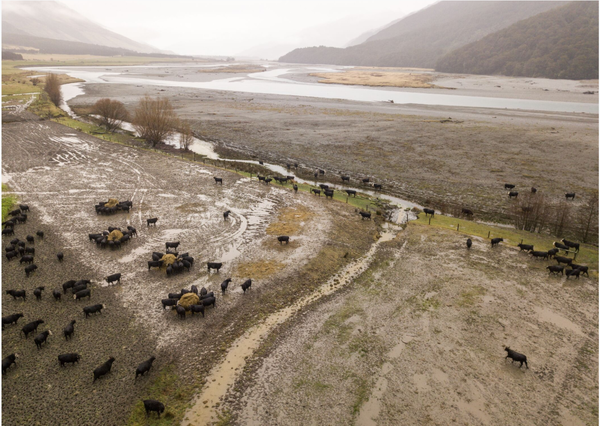The movement for a green and peaceful planet would not be possible if not for supporters like you. Read about the amazing things you are making happen below.
How you’re protecting The Amazon
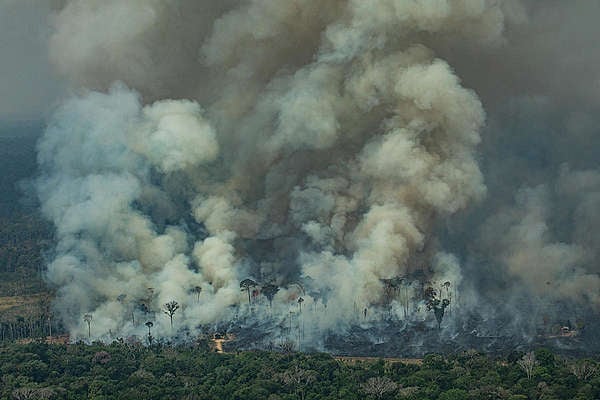
This year, the world has watched in horror as the Amazon Rainforest burns at record rates. To combat a crisis of this scale, the global Greenpeace community has mobilised to protect this incredible and powerful ecosystem.
Supporters like you allow us to continue to partner with indigenous communities and raise global pressure against forest destruction.
On September 6, alongside community group Canopy Brasil, we presented a petition to pressure the Brazilian government to act decisively to protect the rainforest. The petition was signed by more than 100,000 New Zealand supporters alone as part of a huge global effort.
It was a powerful experience for the crowd, sharing a minute’s silence for the forest, followed by peaceful chanting for the protection of this precious place.
One industry shares more of the blame for this crisis than any other. Agribusiness clear vast areas of forest to make way for cattle and soya farms. Fast food Companies like KFC, Burger King and McDonalds all buy products from this region – furthering forest destruction and exacerbating the climate crisis.
With your support, we have kicked off a global campaign to change their supply practices. We cannot allow reckless industries to continue business as usual while the world burns.
Find out more about how to save the Amazon.
How you’re fighting Big Oil in NZ
Over the course of almost a decade, we have kicked nearly all oil companies out of New Zealand.
But the fight is not yet over. Austrian oil giant OMV is the last company still searching for new offshore oil and gas in New Zealand because permits granted before the ban are still valid.
So, on the 23rd of July, activists Abigail Smith and Nick Hanafin scaled Wellington’s tallest building – the Majestic Centre. They reached the headquarters of OMV and announced a public protest to evict the Austrian oil giant, unfurling a series of brightly coloured banners along the way.
This climb put the issue back into the spotlight, exposing OMV’s dirty plans and letting them know they can expect resistance at every turn here in Aotearoa. It also signals that globally, in the face of humanity’s biggest challenge, people rather than profit will prevail. This peaceful protest would not have been possible without your support.
Following the climb, on the 14th of August, Greenpeace activists and representatives from groups including Oil Free Wellington, 350 Wellington, Extinction Rebellion, Oil Free Otago, and School Strikes 4 Climate delivered an eviction notice to the Austrian oil giant OMV at its Majestic Centre headquarters in Wellington. The eviction notice has now been signed by more than 30,000 people, sending a strong message that offshore oil and gas exploration are not welcome here.
Find out more about the uprising against OMV here.
How you’re supporting The Next Generation
The next generation of climate activists inspired us all during a week of training recently. To illustrate the difference your gifts have made, we’d like to share this message from Maia, a School Strike 4 Climate student. Please see her words below and find hope in the difference you are making.
_____________________
It was the 8th of July, the first day of school holidays for most people our age: but for 20 students with an acute awareness of our degrading climate, myself one of them, it was the beginning of an intense week of training, planning, and inspiration.
20 leaders of the New Zealand School Strike 4 Climate movement were to convene in Auckland for a training camp held specifically for us by Greenpeace. Over 3 full days of training, we learnt strategy, tactics, communication and media techniques to strengthen our movement. We learnt about movements that had happened in the past, different types of activism, and we worked on what we wanted our movement to look like, beyond the next strike.
This training was extremely beneficial, but perhaps the most valuable takings of the week was the opportunity to meet and connect with each other, to understand that we were all fighting one fight for climate justice.
The Greenpeace activists we connected with and the lessons they taught us were amazing and we couldn’t be more grateful for the opportunity they gave us to grow our own form of activism: one that is inclusive of everyone, young and old, one that is peaceful, and one that pushes for people in power to take action to protect our futures and slow climate change by progressing our society to the equitable, poverty-free, sustainable, future we require.
Our movement is stronger than ever: and we will continue to push for change as long as we need too. People in power, watch out. Change is coming.
Everyone deserves a world where the planet, and therefore ourselves, is protected. Let’s stand up for climate justice.
How you’re fighting for ocean protection
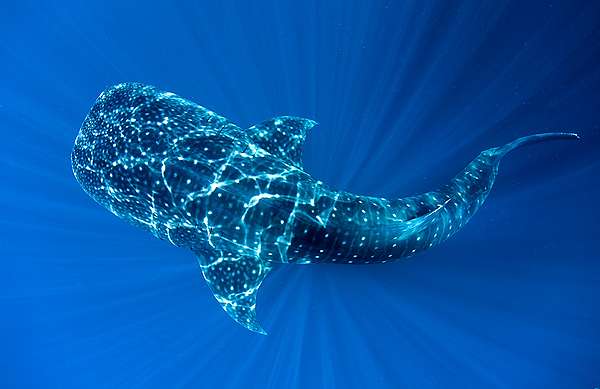
What do I, a Greenpeace New Zealand campaigner, Javier Bardem, and a giant model whale, all have in common? At the end of August, we were all at the United Nations (UN) Headquarters in New York to demand the strongest possible international treaty to protect the oceans.
Negotiators from around the world met for the third round of talks, aiming to establish a historic treaty that will govern international waters. If they get it right it could open the door to creating huge global oceans sanctuaries. Science tells us we need to put at least 30% of the oceans off-limits to human activity if we are going to give the ocean and everything that lives there a chance to recover and thrive. This treaty is how we get there.
The U.N. negotiations are a live event. Greenpeace had representatives from all around the world at the talks, working alongside colleagues from Pew Research Center, the High Seas Alliance, and the International Union for Conservation of Nature. Together we monitored progress on the talks, held leaders to account, provided advice, crafted treaty recommendations, and pushed for greater ambition on behalf of millions of Greenpeace supporters around the world. People like you.
Javier Bardem joined us on the first day of the negotiations to call attention to the urgency of this treaty. Throughout the week, thousands of people visited the whale installation at the entrance of the U.N., a daily reminder for the negotiators of what’s at stake.
When it comes to New Zealand, we welcomed some positive and innovative suggestions for the treaty from the delegation late in the week. But we need to see New Zealand strengthen its commitment to implementing protection measures. At the moment, our representatives at these meetings seem prepared to let the fisheries and seabed mining management organisations take control of protecting our oceans – and this isn’t good enough.
Across the board, the negotiations didn’t move with the urgency or vision we had hoped. There is a lot of work still to be done before the final round of talks in April 2020. But you can bet we’ll be there every step of the way, holding power to account and helping raise their eyes to the vision of a thriving blue planet. Thank you for making the work we do possible, and if you haven’t already – sign the Protect the Oceans petition to show your support.
Jessica Desmond, Oceans Campaigner
You’re saving Māui and Hector’s dolphins
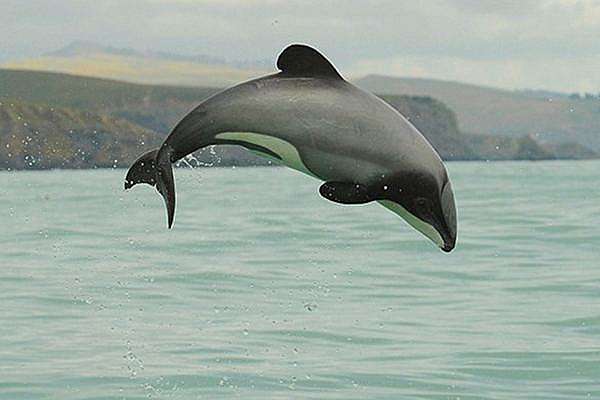
Your calls to protect Māui and Hector’s dolphins have been heard at Parliament. On the 18th of August, renowned zoologist Dr Liz Slooten and actor Robyn Malcolm joined us in presenting our petition to save Māui and Hector’s dolphins at Parliament Square.
We called on the Government to give these precious native dolphins proper protection from net fishing, mining, and oil exploration. More than 55,000 supporters like you signed this petition, and more than 5,000 made submissions on the Threat Management Plan.
With only around 60 Māui left, we urgently need to protect their full habitat. Yet the fishing industry is running a massive PR offensive to counter this, spinning misinformation on the cause of the Māui dolphin’s decline.
With the consultation period now closed, we must keep pushing the Government to implement the strongest protections possible and stand up against the fishing industry’s misinformation. With your help, we will keep fighting.
You’re saving our waterways
Through the force of your people-power, plans to irrigate up to 9000 hectares on the south side of the Hurunui River in Canterbury have been abandoned. Had this gone ahead, it would have taken huge quantities of water from iconic rivers to drive more industrial dairying, and therefore more water pollution.
In September, the Government also released an Action for Healthy Waterways document, proposing new restrictions on dairy conversions, further farming intensification and synthetic nitrogen use. Greenpeace, along with supporters like you, made submissions on this plan demanding strong protections including halving the herd and banning synthetic nitrogen fertiliser. Instead of producing vast amounts of bulk milk powder, New Zealand can transition to regenerative farming and produce a variety of high-value, clean, green food and fibre products.
While the Government has proposed some good starting measures, there’s still a lot of work to be done to strengthen the plan enough to really clean up our waterways. Other proposals also rely on continuing industry ‘self-regulation’, which has been completely ineffective considering 70% of our rivers are too polluted to swim in. The plan is also lacking in that it does not address Māori water rights or Te Tiriti o Waitangi.
Together, we can fight for strong, mandatory rules that will clean up our rivers.
Winter cropping Q&A
Few of you could have missed the horrifying pictures of cows stuck in mud in recent months, the ugly face of intensive winter grazing. Here’s a Q&A with the man behind them, citizen campaigner Angus Robson.
What is Intensive Winter Grazing and why’s it so bad? This is the practice of growing a fodder crop and having the animals eat it directly from the paddock. It’s common in areas like Southland, Otago and Canterbury where not much grows in the winter. The intensity comes from how much is fed in how small an area – if there are many animals in a small area for a long time they churn all the ground up, and when it rains this all goes to mud which can get deep. The animals suffer as they have nowhere to lie down, often have no clean water, and the diet can be fattening but not nutritious so they can have health issues. The environment suffers, either by very high concentrations of nitrate pouring down into the groundwater or by runoff of germ-infested mud into waterways. Intensive winter grazing is a kind of industrial farming done to feed far more animals than the land can support.
You got some pretty disturbing pictures this year. How did you manage this? A small team of brave and dedicated people travelled several thousand kilometres and looked at hundreds of farms. The images used were the norm rather than the exception. They were almost all in Southland, with a few in Otago. We also received unsolicited images from concerned people and sent OIA’s to organisations for their images.
Did the images upset you personally? The main distress came from the realization that there is no part of the system fighting in the animals’ corner, and little in the environment corner. There is effectively no animal welfare system for animals in mud. It sounds unbelievable but it’s true.
Can you explain the effect they had on the campaign? Our hope was that we would get improvement due to public concern. As a result of the campaign MPI Minister Damien O’Connor has established a winter grazing animal welfare task force. Intensive Winter Grazing is now under the spotlight and programs to improve practices are happening all over NZ.
Angus Robson first got involved with water quality issues in 2012 after biking round his region and seeing no swimmable water virtually anywhere. He decided to stop moaning and do something. This campaign has been run with another private citizen, Geoff Reid who took many of the shots.
Thank you once again for all that you do. This Earth-saving work could not happen without you.
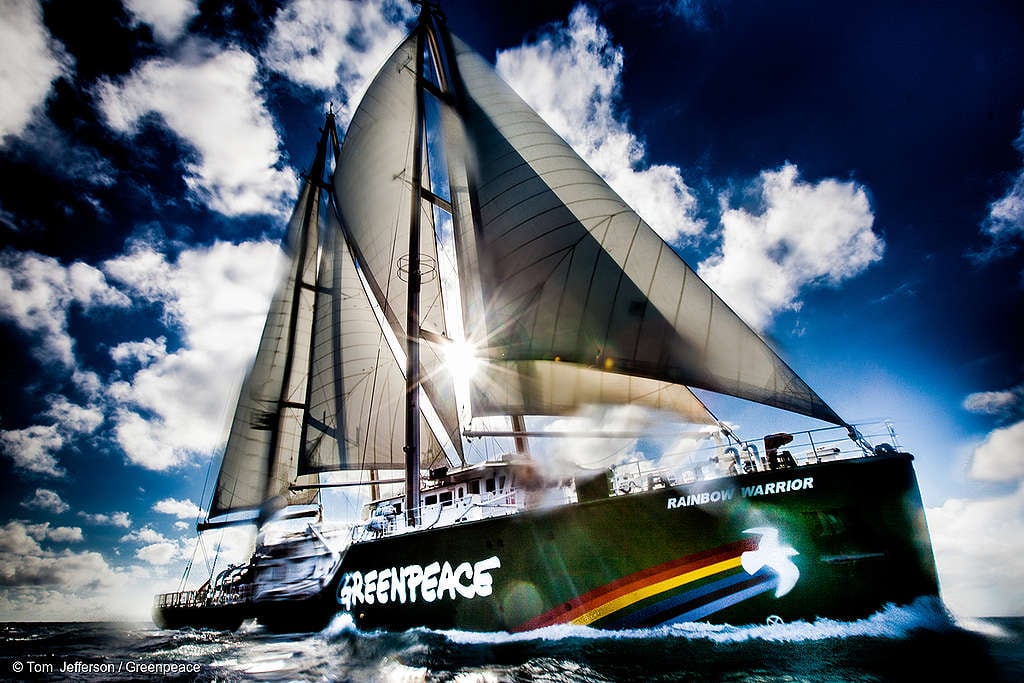
Donate to Greenpeace today. We take no money from corporations or governments. Our independence and ability to speak and act freely is our greatest strength. To maintain that freedome, we rely on the generosity of people like you to keep us in action.

